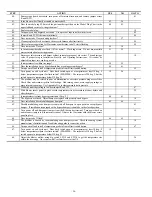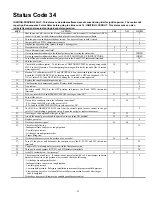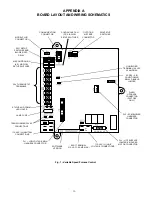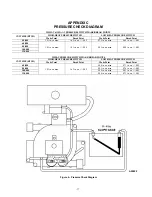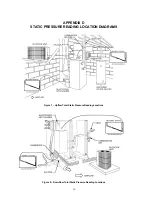
- 36 -
APPENDIX B
ECM BLOWER MOTOR DESCRIPTION & OPERATION
The G.E. Electronically Commutated Motor (ECM) shown in figure 5 is different than previous generations of variable speed blower motors. This
motor has all of the capabilities of previous ECM blower motors but it does not have to be pre-programmed at the factory. Instead the variable speed
furnace control programs the ECM blower motor upon application of power to the ECM blower motor via the serial communication link between the
variable speed furnace control and the ECM blower motor. This eliminates the need for a multitude of different ECM blower motors where each one
is programmed for one specific furnace model. The ECM blower motor is energized with 115-vac whenever power is available at the variable speed
furnace control, but operates only when the variable speed furnace control communicates the proper serial commands to the ECM blower motor at
PL13.
The ECM blower motor is first fed 115-vac power through the 5-pin connector PL14. The 115-vac power is then rectified to DC by a diode module.
After rectification, the DC signal is electronically commutated and fed in sequential order to 3 stator windings. The frequency of commutation
pulses determines motor speed.
Setting up the desired airflow CFM for an ECM blower motor is done by setting the A/C or CF selections on the variable speed furnace control
shown in figure 1. The ECM blower motor then delivers requested airflow CFM as defined by serial commands received from the variable speed
furnace control.
The ECM blower motor is configured via the variable speed furnace control to react to changes in system static pressures to maintain constant
airflow CFM. The ECM blower motor delivers requested airflow CFM up to about 1.0 in.w.c. of static pressure for most airflow settings. The
variable speed furnace control is pre-programmed and contains all the information relative to each furnace model for all modes of operation. Blower
characteristics for each model (airflow CFM, torque, and speed versus static pressure) are known from laboratory testing. If any 3 characteristics are
known, the fourth can be defined. The airflow CFM is known because of the A/C and CF selections, model plug, and the thermostat input signals on
the variable speed furnace control. The variable speed furnace control then communicates the airflow CFM to the ECM blower motor. Torque is
known by the ECM blower motor because it is directly related to armature current which is measured by the ECM blower motor control. Speed is
measured from the generated back EMF by the ECM motor control. This information (airflow CFM, torque and speed) are entered into an
expression which calculates torque from speed and airflow CFM numbers. If the calculation does not match stored blower characteristics, torque is
adjusted every 0.8 seconds until agreement is reached. The ECM blower motor does not directly measure static pressure, but does react to changes
in static pressure to maintain constant airflow CFM.
Figure 5 – ECM Blower Motor



